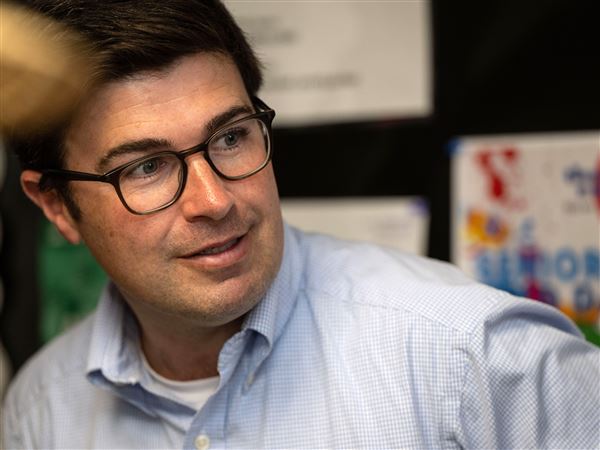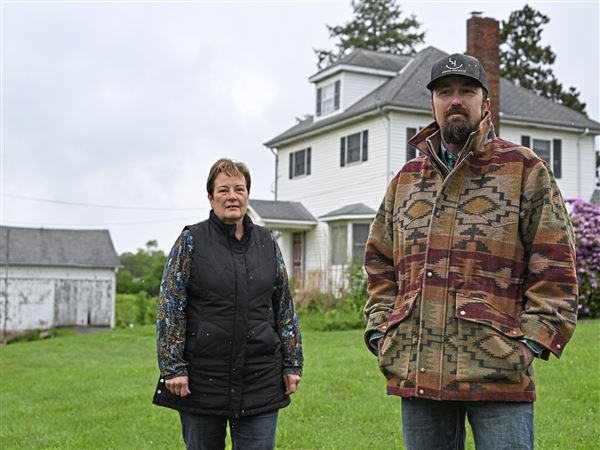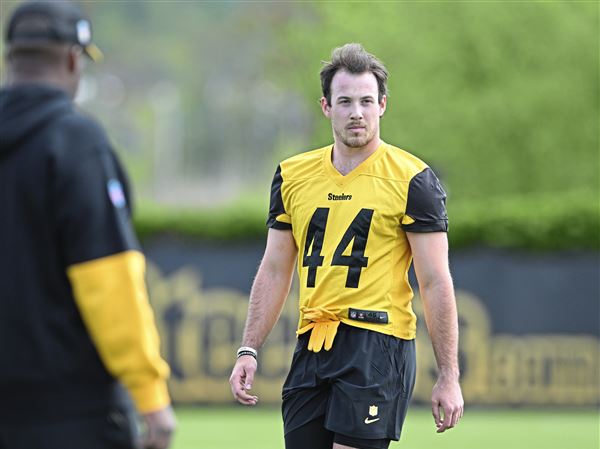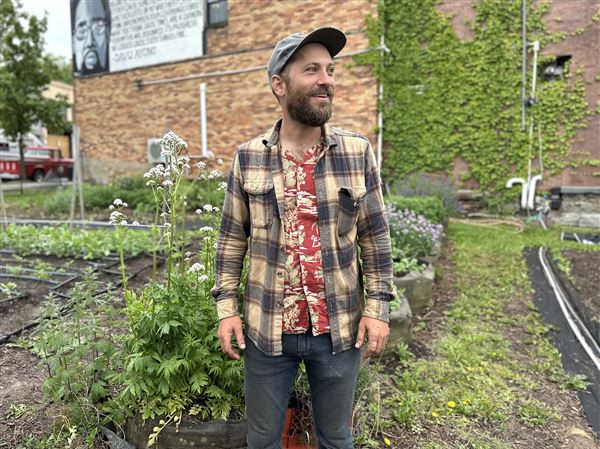The senseless slaughter of 26 people at Sandy Hook Elementary School in Newtown, Conn., captured the nation's attention more than any other mass murder since Columbine in 1999. President Barack Obama called for action and appointed Vice President Joe Biden to head a task force aimed at preventing future violence. Days later, Wayne LaPierre, executive vice president of the National Rifle Association, rejected any solution except putting armed guards in all schools. He stated that guns are not the problem and, using a pet expression, said, "The only thing that stops a bad guy with a gun is a good guy with a gun." He introduced a new program -- National School Shield -- to train armed school guards. Mr. LaPierre stresses the increased use of NRA-trained guards as opposed to government efforts to halt mass murders in our nation's schools.
The Sandy Hook tragedy has reopened debates on the touchstone issues of security, gun control and mental health. But criminal behavior is impossible to predict, no security arrangement is foolproof and research on gun control is inconclusive. As a result, the conversation on how to make schools safer will be guided and constrained by politics, powerful special interests and the positions taken by influential Americans.
In the interest of informed discourse, I offer the following observations:
Mass murder: a random crime
How many mass murders are committed each year? This is a difficult question to answer. There is no official definition or universal typology of mass murder, and the FBI, in its annual Uniform Crime Report, does not use the term. FBI profilers use a working definition of four or more victims in one location and within one event.
Other researchers have other definitions. The U. S. Bureau of Justice Statistics, using the FBI's Supplementary Homicide Reports, analyzed homicides with three or more victims from 1980 through 2008. The number of victims in the combined incidents has consistently totaled less than 1 percent of all homicide victims each year. In 2011 there were an estimated 140 homicides involving three or more victims. The majority of mass murderers are fathers who wipe out their families and criminals who murder while committing other crimes.
Mass murders, especially mass murders in public locations, are rare events that occur randomly. Predicting the location of the next attack is impossible. Despite that fact, it's easy to become a victim of what security expert Bruce Schneier has labeled "post-traumatic stupidity syndrome," a term that reflects our predisposition to overreact to emotionally charged and sensationalized crimes involving violent death and enact exaggerated security measures that are not likely to reduce risk. That's especially true when the victims, as with 20 of the 26 Sandy Hook victims, are children.
We should recall admonition from Nassim Nicholas Taleb, author of "The Black Swan," that "infinite vigilance is just not possible" -- and then address general issues that affect our security as a nation. Reasonable security can help prevent some attacks and alleviate fear of them. (Mr. Schneier refers to the psychological aspect as "security theater.")
Even if we cannot predict attacks, we can project the consequences at specific locations. We can assess the vulnerabilities of those locations and visualize the tactics a mass murderer could use to penetrate defense systems. Then we can evaluate countermeasures, such as armed guards or a sophisticated access-control system.
If the site is owned by a private entity or public corporation, cost usually will be an overriding consideration. For example, well before the 9/11 attacks occurred, airline industry executives knew that poorly secured doors to the cockpit were a security risk. They believed that the cost of fortified doors was too great and the probability of an attack unlikely. They effectively lobbied key congressmen, and the government failed to require security changes.
After the 9/11 attacks, of course, this changed, and we now have fortified cockpit doors. The new doors, however, have not stopped attempts at using planes as flying bombs.
Gun control: no panacea
Mass murderers in Tucson, Ariz.; Aurora, Colo.; and Newtown showed the deadly effectiveness of high-capacity magazines combined with either semiautomatic handguns or assault weapons. The belief of a significant portion of our population and many of our politicians is that these items are unusually dangerous and should be banned. Federal law banned them in the past, and they are currently banned in some states. But are gun bans effective?
Perhaps not. I reviewed the Uniform Crime Report statistics for firearms-related homicides and received a surprise: From 1993, when the federal ban on semiautomatic assault weapons and expanded magazines took effect, to 2004, when it expired, the firearms-related homicide rate fell from 6.6 people in 100,000 to 3.6 people in 100,000. Was that because of the ban? By 2011, seven years after the ban ended, the firearms-related homicide rate had fallen to 3.2 people in 100,000.
The murder rate, like all crime, is affected by myriad factors. The gun lobby believes that the most important deterrent is the prevalence of individuals with the right to carry handguns. But is Mr. LaPierre right? Does the presence of good guys with guns stop bad guys with guns from committing mass murder? Would an influx of citizens carrying concealed handguns -- ready to engage in battle with mass murderers, who may or may not know they are armed -- lead to a decrease in such crimes?
Anyone who decides on this solution should know that police officers, who have consistent firearms training and are used to stressful situations, have a poor record for accuracy in armed encounters. That's because of the extreme stress of such encounters. To successfully handle such an encounter in a location with many frightened people would require exceptional skill and pre-incident awareness of the threat -- or a great deal of luck.
In the most authoritative review to date of the relationship between firearms and violence, the National Research Council concluded that "existing research studies and data ... do not credibly demonstrate a causal relationship between the ownership of firearms and the causes or prevention of criminal violence or suicide." The council said there's no empirical evidence that the passage of concealed-carry laws decreased or increased the incidence of violent crime.
In my own review of state concealed-carry laws and homicide rates, I did not find a consistent relationship between the crime rate and presence or absence of concealed-carry laws. Nonetheless, I believe that the presence of highly trained, responsible individuals could make a difference in our general security posture.
I also respect a person's right to carry a concealed weapon for self-defense. I have been a National Rifle Association member, competitive handgun shooter and FBI firearms instructor. More than two decades of dealing with violent criminals has made me slightly paranoid about the probability of a criminal attack.
We currently have about 310 million firearms available to American civilians. Our rate of gun possession is almost one per person. Yet, on a national basis, our murder rate is reaching a historic low.
In our inner cities, and some areas of the South, however, murder rates often are much higher. I believe that the prevalence of guns, the major facilitator of most types of violence, is one of several factors responsible for the violence plaguing these areas.
At this time, however, there is no empirical evidence to support a ban on any type of firearm or magazine that's currently legal to possess.
In California, which has had a ban on concealed handguns for several years, handguns are involved in 69 percent of all homicides. This is the 13th highest percentage nationwide.
Mental health evaluations for gun-buyers
Can we prevent mass murders by denying more mentally ill people access to firearms?
Theoretically, if we can control the actions of dangerous people, we should be able to stop mass murders. The public supports limiting access to firearms for minors, felons and the mentally ill. National law prohibits licensed dealers from selling firearms to drug addicts and those who have been committed to mental institutions or adjudicated as incompetent/dangerous or received a verdict of not guilty by reason of insanity. Pennsylvania law also denies firearms to anyone adjudicated incompetent or involuntarily committed to a mental institution.
Analyses of mass murder have found varying degrees of mental impairment among perpetrators. Most of the individuals, however, were not diagnosed before their crimes. Making such judgments prospectively is a difficult and in some cases impossible task.
A person in the initial stages of mental disease, such as depression or paranoia, can purchase a weapon with impunity. In addition, the U.S. Supreme Court in 1997 ruled that Congress could not compel states to report attempted firearms purchases by ineligible individuals.
As a result of that decision, states decide who should be reported to the FBI's National Instant Criminal Background Check System. Some have declined to do so, and others may have varying standards for reporting. Even if an ineligible person makes it into the database, weapons still may be purchased at gun shows from unlicensed dealers, who are excluded from conducting background checks on purchasers.
How great a risk for violence are mentally ill persons who are ineligible to purchase firearms? The research in this area doesn't show that the increased identification and exclusion of mentally ill individuals from purchasing firearms has reduced the rate of firearms-related homicides. The research shows, at best, a modest risk of violence by the mentally ill, unless the illness is combined with a substance-abuse problem or individual history of violence.
Lobbying organizations have opposed increased background and proficiency testing, including mental health evaluations, for prospective owners of firearms. But this process would decrease the number of firearms in circulation without raising constitutional questions about a ban.
This policy also would identify many individuals who have some degree of mental illness and, consequently, should be restricted from possessing firearms. There are legitimate privacy and discrimination issues with this procedure, and guidelines to ensure constitutionality would be needed.
Bad genes, bad environment
Mass murderers kill because they cannot see any alternative and the consequences of their actions are more attractive than their current circumstances. They are on a pathway guided by genetic flaws and negative environmental influences. Even the worst of them have some characteristics in common with the rest of us.
The first mass murderer I encountered as an FBI agent was an arsonist. On New Year's Eve 1986 in San Juan, Puerto Rico, Hector Escudero Aponte lit a fire that killed 97 people, most of them burned beyond recognition. He had a reputation as a tough guy and bully. He set the fire at the DuPont Plaza Hotel, where he worked as a maintenance man. He set the fire while two other employees stood watch.
When we arrested him, he confessed to the crime but would not admit that he intended to kill. It is possible he did not, but the probable consequences of his act were apparent. He loved and cared for several birds kept at his home and worried about what would happen to them if he went to prison. He was sentenced to two 99-year prison terms. No one, including him, ever will know all the motivations that compelled him to light the fire that turned a beautiful hotel filled with tourists into hell.
Most mass murderers do perceive the possible benefits and risks from their actions. The possible benefits usually include feelings of pleasure from dominating and wielding power over others. Adolescent mass murderers, like Dylan Klebold and Eric Harris, the Columbine killers, have less control over their inner compulsions than adults because the frontal lobes of their brains are not yet fully developed. They were unable to squelch the compulsions to commit murder. External controls over behavior -- family, school, religion, social gatherings, friends, wives, valued jobs -- are also weak or absent in the cases of mass murderers.
After mass murder occurs, it seems apparent that the murderer was abnormal. We ask why an "obvious" risk went undetected. But it is impossible to predict who will be a mass murderer. Fortunately, the fact that they are affected by immediate situational factors means that security measures sometimes can stop them.
"Good guys with guns" are a possible security measure, and their presence or suspected presence at the location of an attack is a risk the mass murderer may consider. In some cases, the risk will stop him. But in other situations, this factor may not deter him. Difficulty obtaining a weapon will delay a planned attack. In some cases, subsequent environmental factors may stop the compulsion to commit an attack. In other cases, the killer eventually will obtain a weapon and complete his mission.
First Published: January 13, 2013, 10:00 a.m.
















